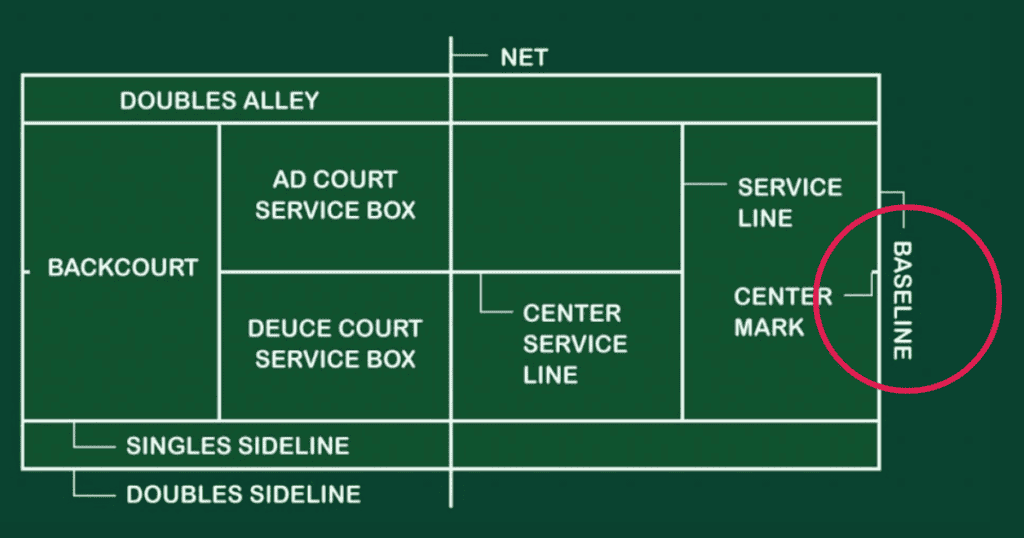Baseline in Racket Sports
Racket sports, ranging from tennis to badminton and squash, have enthralled millions globally. These games are a delightful combination of strategy, skill, and athleticism.
And while the whole court is a battleground, there’s one area that holds strategic importance: the baseline.
Understanding the Baseline
The baseline is the line at the back of the court. In sports like tennis, players often stand near the baseline when serving or receiving a serve.
But it’s not just a starting point. The baseline, for many, is a preferred territory from which to launch powerful groundstrokes and create strategic plays.

Why Play from the Baseline?
- Power Play: From the baseline, players can use the full swing of their racket to generate powerful shots. These groundstrokes often force opponents to stay defensive.
- Viewing Angle: Standing at the baseline offers players a comprehensive view of the court. They can watch their opponent’s moves and strategize accordingly, predicting where the next shot might land.
- Defensive and Offensive Strategy: Baseline play allows for both defense and offense. Players can efficiently return powerful serves, and at the same time, they can switch to an offensive mode, sending the ball to challenging positions for their opponents.
Examples of When to Use the Baseline
- Returning a Serve: Most players position themselves at or near the baseline when they’re about to receive a serve. It offers enough reaction time and space to handle powerful serves.
- Engaging in Rallies: In lengthy rallies, especially in tennis, both players often find themselves exchanging groundstrokes from the baseline. It’s a test of patience, accuracy, and power.
- Against Net Players: If an opponent is skilled at net play, staying at the baseline can be a strategy. From there, players can lob the ball over the net player or aim for angled shots to make it difficult for the net player to reach.
Advantages with Caution
While playing from the baseline has its advantages, it’s essential to adapt based on the game’s flow. Relying solely on baseline play can become predictable.
Opponents can exploit this predictability by drawing baseline players to the net with drop shots or other strategies. Therefore, while the baseline is a powerful place to play from, versatility and adaptability remain crucial in racket sports.
Summary
The baseline in racket sports is more than just a line on the court. It’s a strategic point from which players can exert power, maintain a defensive stance, and oversee the court. Whether you’re returning a serve, engaging in a rally, or countering a net player, the baseline provides a solid ground for multiple strategies.
However, the key to mastering racket sports isn’t just about holding your ground at the baseline, but also about adapting and diversifying your game. In the dynamic world of racket sports, the baseline is just one of the many strategies in a player’s arsenal, but its importance is undeniable.